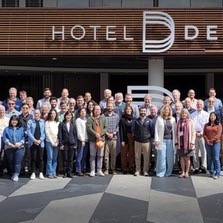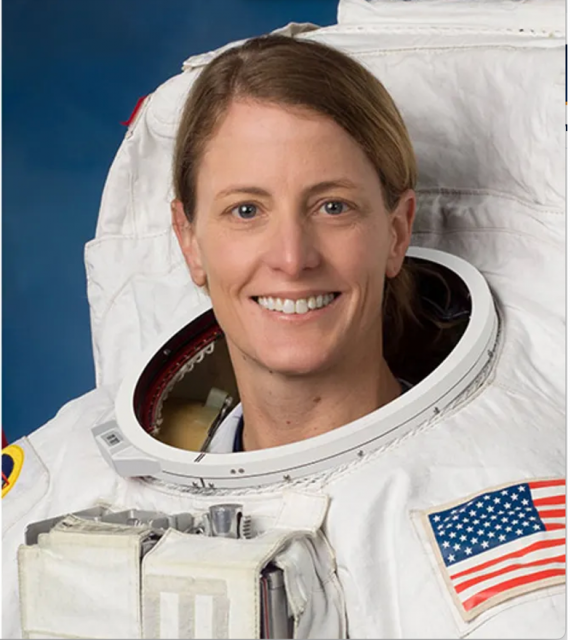Posts Tagged ‘NASA’
Edson Encourages Federal Agencies to Use OOI Data
The U.S. National Science Foundation Ocean Observatories Initiative (OOI) Program Management Office Principal Investigator Jim Edson was invited to Pasadena, CA in April to present to a group of 160+ of experts who use satellite data to study the planetary boundary layer (PBL) over land, sea, and ice. These experts use observations and modeling to determine the PBL and represented an alphabet soup of federal agencies – NASA, NOAA, CLIVAR, DOE, ONR and NCAR. Edson took the opportunity to introduce them to OOI.
The attendees came together for NASA’s Decadal Survey Planetary Boundary Layer Incubation Community Meeting. Edson gave a presentation about observing the marine PBL using OOI and its partnership with the National Data Buoy Center and OceanSITES as examples of how to build an ocean network of observations.
“This presentation was one of my ongoing efforts to share knowledge about OOI and the data it can deliver,” said Edson. “By focusing on how valuable and rich the available data are, I hoped to re-enforce to our colleagues at these various agencies and institutions that OOI data are an important source for satellite calibration and validation activities over the open ocean. This represents only one of multiple ways that OOI can be used to clarify our understanding of what is going on in the rapidly changing marine environment.”
Read MoreLive Stream with Former OOI Engineer
Jan 23, 2024 03:00 PM
Tuesday January 23 brings the opportunity to join a live downlink from the International Space Station (ISS) featuring NASA astronaut and former WHOI and OOI engineer, Loral O’Hara. Loral will share insights, answer questions, and discuss the many fascinating connections between exploration in space and the ocean. Also on stage will be Alvin Program Manager Bruce Strickrott and WHOI marine microbiologist Julie Huber.
Read MoreNASA Astronaut has OOI Roots
When NASA astronaut Loral O’Hara lifted off on a Russian Soyuz rocket for a six-month stay aboard the International Space Station, Woods Hole Oceanographic Institution (WHOI) Principal Engineer Don Peters and his family were all huddled around their respective NASA TV screens to watch. Peters had hired O’Hara as a WHOI engineer in 2009, where she worked until her acceptance to the NASA Astronaut Class of 2017. During her time at WHOI, O’Hara served as part of the engineering teams on both the Ocean Observatories Initiative (OOI) and the human-occupied vehicle (HOV) Alvin Upgrade.
As an engineering lead for both OOI and Alvin, Peters was hiring a number of engineers in 2009. “Her resume jumped out at me,” he explained, noting that she had gotten her private pilot’s license at age 16, which was all part of her ultimate ambition to be an astronaut. O’Hara joined WHOI after having earned a Bachelor of Science degree in aerospace engineering from the University of Kansas, followed by a Master of Science degree in aeronautics and astronautics from Purdue University.
Throughout her time at WHOI, Peters said she exhibited strong technical skills, a positive attitude, and an ability to work well under pressure. “Loral brought exceptional technical skills to OOI, where she excelled at systems engineering (structuring project efforts based on documented requirements), which was just what OOI needed during its early years, and continues to utilize now in its tenth year of operations,” he added.
O’Hara was involved in the initial development and testing of a new design for high conductor-count mooring stretch hoses, which are key functional elements of the OOI Coastal and Global Scale Nodes (CGSN) coastal surface and profiler moorings. Stretch hoses give the instrument-equipped buoys the ability to be anchored with electrical connection to the seafloor and move with the waves and wind. She spent a majority of her time at WHOI on the Alvin Upgrade project, where she was lead for the specification, design, and fabrication of the main vehicle frame, and served as lead Systems Engineer and assistant Chief Engineer under Peters.
[media-caption path="https://oceanobservatories.org/wp-content/uploads/2023/11/clapping.jpg" link="#"]WHOI staff celebrate Loral O’Hara’s successful liftoff aboard the Soyuz MS-24 spacecraft from the Russia-run Baikonur Cosmodrome in Kazakhstan enroute to the International Space Station. Credit: Jayne Doucette © WHOI.[/media-caption]It was with great delight that, in 2017, Peters learned that her dream of becoming an astronaut was to be realized. It was O’Hara’s third time applying to the space program, and she was selected as one of twelve candidates for the 2017 NASA Astronaut Class, from a field of about 18,000 applicants. He knew she was an awesome team player with good skills and a great personality, who exhibited a steadiness under pressure. “Those qualities resonated with the space program and are visible in Loral’s work in space today,” Peters said, then added, “It’s pretty mind blowing to think of her flying overhead a couple times a day, and it was just such a thrill to see her arriving up there in the Space Station, with such a huge smile on her face.”
When Peters watched O’Hara on her first space walk outside of the International Space Station (ISS) for six hours and 42 minutes on Wednesday November 1, 2023, he wasn’t surprised nor worried. (The spacewalk was the fourth all-female spacewalk outside of the ISS). O’Hara and fellow NASA astronaut Jasmin Moghbeli set out to remove radio frequency group hardware and replace solar array hardware outside the ISS.
Read More


